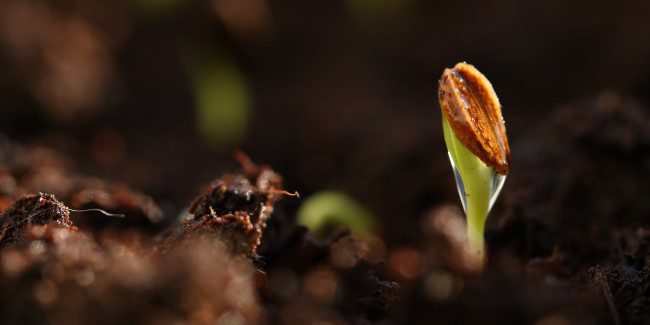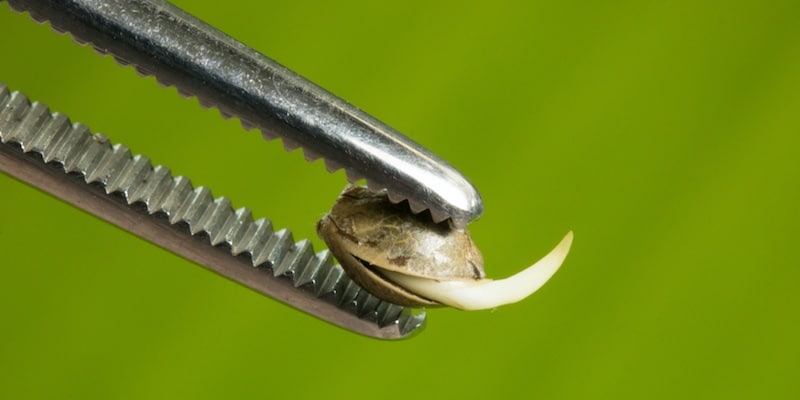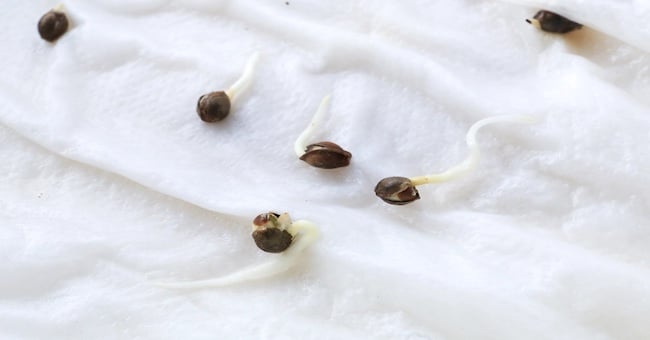
How to germinate seeds
The germination of vegetable seeds is the process of growing plants directly from seeds rather than growing them from cuttings or buying plants that have already been grown. Although this may seem like a simple…
Iberian Peninsula express shipping
0€ Orders over 60€
*6€ orders under 59€
East, West, South Europe express shipping
0€ Orders over 150€
*18€ orders under 149€
North Europe express shipping
0€ Orders over 160€
*20€ orders under 159€
Ireland, Norway, UK normal shipping
0€ Orders over 60€
*6€ orders under 59€
Rest of the world normal shipping
0€ Orders over 180€
*25€ orders under 179€
Shipping costs can be confirmed in your shopping cart.
For additional shipping methods, please reach out through info@kannabia.com.


*Website protected by SSL.
**Not available in all regions.
*Your coupon will be sent via email.
*Should you have any question, comment or feedback, please do not hesitate to contact us.

Germinating cannabis seeds may seem like a simple process, but you can often encounter unexpected obstacles that can frustrate even the most experienced growers. This post addresses the most common problems that can prevent your Cannabis seeds from sprouting, offering practical solutions to achieve successful germination.
The germination of Cannabis seeds is an essential step in the growing process and can be carried out in many different ways. In a cup of water, wrapped in cotton wool, in wet napkins, directly in the soil… Everyone has their own preference. But it’s important to know that some methods are more effective than others (you can check out this post to learn more about the different techniques that you can use).
However, sometimes seeds don’t sprout, which can lead to waste of efforts and huge disappointment. There are several reasons why cannabis seeds may not germinate. Therefore, it is important that you address these 10 possible problems to increase your chances of success:
marijuana seeds germinate more easily in a temperature range between 20 and 30°C (ideally between 22 and 25ºC). Within this range, the metabolic processes needed for germination are effectively activated. If the temperature falls below 20°C, the seed’s metabolic activity decreases significantly. On the other hand, temperatures over 30°C can be equally harmful and can lead to the dehydration of the seeds or, in extreme cases, to the embryo being damaged or even killed. To keep the temperature in the optimal range, you can use temperature-controlled propagators or place the seeds in areas where conditions are stable, such as heated interiors. You can also use thermal blankets, which help to keep the heat constant.
Maintaining adequate moisture levels is crucial for good germination. The best relative humidity levels to achieve this are between 70 and 90%. Excess moisture in the soil can prevent the seeds from accessing oxygen and lead to fungal growth, whereas insufficient moisture prevents the seeds from absorbing the water that they need to activate the enzymatic processes that initiate germination.
Using a growing medium like coco coir or vermiculite, which retain moisture without becoming saturated, can help maintain the right balance. If you’ve planted in substrate or peat (or Jiffy) pellets, it is vital to keep the medium moist when you water your seeds, but never waterlogged. To maintain moisture levels during this period, cover the seeds with a transparent plastic dome or cover to create a microclimate to help retain it.
Excessive humidity can be prevented with a few simple adjustments. For instance, if you’ve germinated using paper towels, make sure that these aren’t soaked but simply moist. And check this out every 24 hours: if the towels begin to dry, spray them with water.

Considering that the roots of any plant are almost always kept in the dark (buried in the ground and protected from light by the pot that surrounds them), it shouldn’t come as a surprise that darkness is important, as it helps activate certain biochemical and hormonal processes which are needed for germination. Having said that, this isn’t essential since it is actually certain wavelengths that can inhibit germination, not light in general. In most cases, red wavelengths promote germination, whereas blue wavelengths can interrupt or terminate it. The main thing is to keep the seeds away from intense light, such as the light from the sun or from grow lamps; but a little light shouldn’t affect germination in any case.
Some growers usually soak their cannabis seeds in water before germinating them. This softens the shell and prepares the seed for planting, as the main root won’t have to work so hard to find its way. The seed is placed in a glass of water, and the grower normally waits until it sinks before planting it. But this can sometimes be a problem because cannabis seeds need air to breathe and, once the seed is completely submerged, it can drown. Don’t leave your seeds fully submerged for longer than a couple of hours. Once they’ve sunk, move them to paper towels or to your chosen medium.
It is essential to ensure that the seeds are planted at the right depth to avoid limiting their access to oxygen or causing them to rot. Planting seeds too close to the surface can also cause them to dry out before they sprout, can expose them to too much light, or make it difficult for them to get rid of their shell. The ideal depth for planting cannabis seeds is usually between 0.5 and 1 cm, with only a slight layer of soil above. This depth facilitates adequate oxygen flow and moisture retention, which will ensure successful germination.
Sometimes, cannabis seeds germinate under the growing medium, so you obviously can’t see it when it happens. In this case, the main radicle grows and comes into contact with the medium; so, if there’s a lot of food available, it can burn badly. Use fewer nutrients when you’re germinating cannabis seeds. If you’re going to plant in soil, make sure you use potting mix, which contains less nutrients than normal soils.
Old or reused soil that hasn’t been sterilised may contain harmful organisms like mould, bacteria, or insects. This can lead to poor germination rates or to the death of the seedlings. Using new and sterilised soil is recommended, and it’s also important to ensure that the pots are clean and contaminant-free. Even if you handle your seeds with bare hands, they may get damaged or affected by oils or other contaminants. To make sure, try to handle your seeds only with tweezers or sanitary gloves, and wash your hands with a non-toxic soap before starting.
Seed germination involves working with water, and it’s important that the one you use has the correct pH (or acidity) value. Seeds are extremely sensitive to this factor. A good pH value for germination is 6.0, so don’t use rain or tap water, as they can have a pH of 8.0 or higher. Besides, tap water may contain chlorine, fluoride, and salts that can be harmful to the germination process. To improve the success rate, it is best to use bottled or distilled water, or to let the tap water sit for a day to allow the chlorine to evaporate.

Compact soil deprives the seeds of oxygen, and poor drainage will increase the risk of disease and mould. But when the soil is too loose, there is too much air around the seeds, so they can’t absorb moisture properly. After you have placed the seeds, tap the soil with your fingers. If you’re adding perlite to aerate the soil, 10 – 20% will be enough.
This isn’t usually a problem indoors, but out in the open, some creatures may dig up the seeds and eat them when you’re not looking. For instance, birds feel especially attracted to hemp seeds. In this case, you can be certain that the seeds aren’t going to sprout because they won’t be there to germinate (since they will be in some animal’s stomach!).
After having tried to germinate your cannabis seed without any success, you shouldn’t just give up. There are ways to get your cannabis seed to germinate, but it may just require a little more work. The main objective is to soften the shell and to give the main root as much help as possible for it to emerge. You can try some of these solutions:
It is important to acknowledge that some seeds may not germinate despite following all of these instructions to the letter. This can be disappointing and is often simply due to bad fortune. However, by properly managing all the factors that we have discussed, you’ll be able to significantly increase the chances of your marijuana seeds germinating successfully each time. Achieving a 100% germination rate in any kind of grow is very rare. Nonetheless, you can get pretty close to that ideal scenario if you purchase high-quality cannabis seeds from a reliable supplier like Kannabia and follow all the correct advice.
Kannabia Seeds Company sells to its customers a product collection, a souvenir. We cannot and we shall not give growing advice since our product is not intended for this purpose.
Kannabia accept no responsibility for any illegal use made by third parties of information published. The cultivation of cannabis for personal consumption is an activity subject to legal restrictions that vary from state to state. We recommend consultation of the legislation in force in your country of residence to avoid participation in any illegal activity.